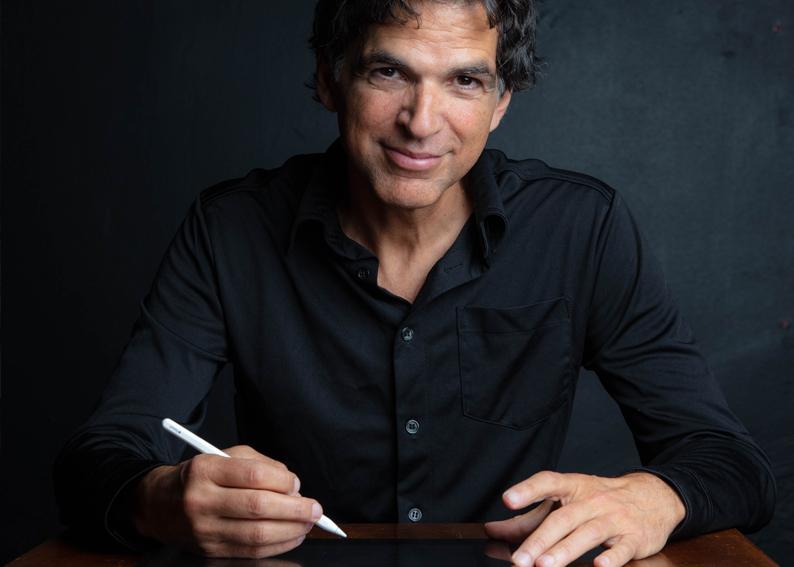News
When cartoons upset Indian nationalists
At the end of April, one of my cartoons published in German magazine Der Spiegel caused quite a stir in India.
Tweets from ministers, a media craze, an embarrassed German ambassador; a simple cartoon suddenly became a geopolitical affair.
But this furor was just part of a bigger story – the Modi government's growing intolerance of the country's humorists and cartoonists.
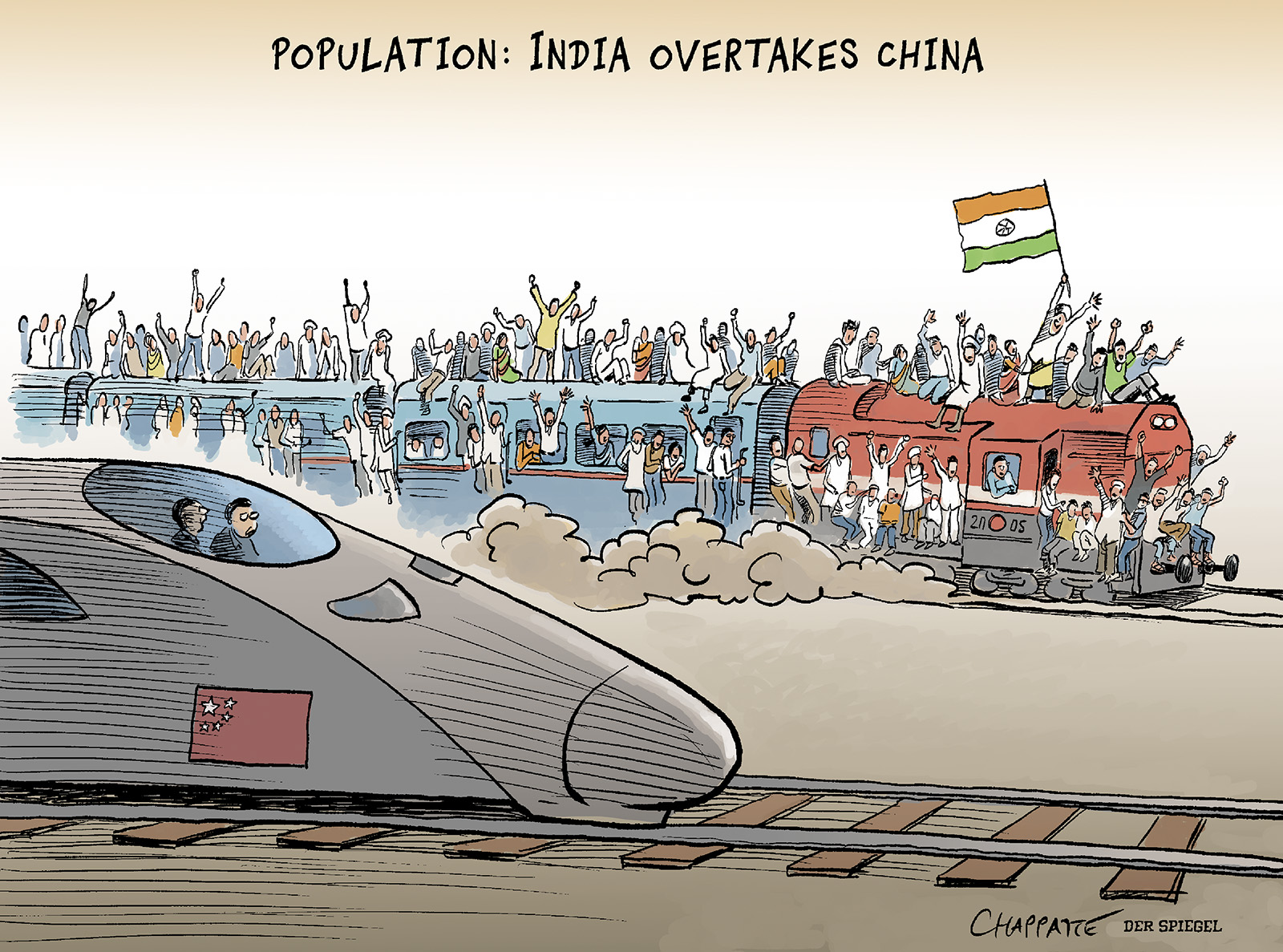
[July 10, 2022 - Adapted from Le Temps]
"World population: India overtakes China". On April 22, this headline inspired the theme of my cartoon for Der Spiegel – a weekly feature since 2018. I depicted a cheerful, overcrowded Indian train overtaking a somewhat gloomy Chinese bullet train. Unfortunately, my train collided with some sacred cows, among them Indian nationalist pride, in fierce competition with China, and the place railroads seem to hold in the country’s national psyche.
The day after publication, the Indian information minister's senior adviser lit the fuse on Twitter: "Hey Germany, this is outrageously racist!". The Minister of Electronics and Information Technology followed suit, and then the vice-president of the nationalist BJP party suggested that Der Spiegel rename itself "Racist Troll". Social networks caught fire, my Twitter feed exploded: “You, German Nazi!”, "You want to talk about trains? Here are some..." (photos of Auschwitz), the entire iconographic panoply of the Third Reich was deployed, until some clever guy discovered that I was born in Pakistan! The fervor and fury of the outcry was redoubled...
??#Germany this is outrageously racist. @derspiegel caricaturing India in this manner has no resemblance to reality. Purpose is to show #India down and suck up to #China.
— Kanchan Gupta ?? (@KanchanGupta) April 23, 2023
This is as bad if not worse than the racist cartoon in @nytimes lampooning India’s successful Mars mission. pic.twitter.com/z9MxcPQC7u
For two weeks, the affair was sustained by Indian media - one TV star devoting her segment to explaining why the cartoon was indeed racist - as well as the international press coverage. Most newspapers merely relayed the invective, in a curious form of journalism that resembles 'retweeting', except for The Guardian, the BBC and CNN, who did their job and provided a little perspective and context. Interviewed on television, the German ambassador to India dubbed the cartoon "neither funny nor appropriate" and volunteered that, in terms of transportation, India outpaces Germany (seemingly not understanding that the trains in this cartoon serve merely as metaphor for economic disparities). The Russian channel RT Television added more fuel to the fire, seeing the image as a symbol of neocolonialist contempt on the part of the West, and conducted 'man on the street' interviews in the markets of Delhi.
"A curious form of journalism that resembles retweeting"
All this fuss over a drawing? Because the image undermines official propaganda. As Ita Mehrotra, a young Indian comic book artist, pointed out: "Overcrowded trains are a cliché, but one that corresponds to the reality experienced by the vast majority of people. The Modi government reacted to this depiction because it runs counter to the idealized image of 'shining India' that has been built up over the past few years." A month later, on June 2, 2023, a horrific train accident in Odisha claimed almost 300 lives and left 1,200 injured.
I had met Ita Mehrotra, along other Indian artists, in April 2022 in a virtual panel discussion on '“Cartooning for social change'. And four years earlier, I had taken the country's creative pulse during a lecture tour in New Delhi, Ahmedabad, Bengaluru and Mumbai. At the height of the controversy, I got back in touch with Ita to find out how she felt about it. In the end, she said, it wasn't such a bad thing that a big controversy had arisen, it was an opportunity to shed light on “the young artists slowly being silenced in India". Good idea, let's talk about it!
Once upon a time, there was freedom to caricature
For this hyper-sensitivity and over-reaction stirred by interventions from Indian officials is symptomatic of the authoritarian drift of Narendra Modi, who became Prime Minister of the Indian Union in 2014. A product of the RSS, a hardline right-wing group often described as "paramilitary", Modi has shown little taste for criticism and no great sense of humor. As soon as he came to power, he broke with India's culture of tolerance towards political caricature.
Emerging in the 1930s, and (more or less) tolerated under colonial rule, editorial cartoons truly flourished after Independence. Every newspaper had its own cartoonist. Perhaps the most celebrated, Shankar published a weekly collection of his works, of which Prime Minister Nehru was said to be a fan, so much so that he once told the cartoonist: "Don't spare me!" Indeed, Shankar and his successors did not spare the powerful and, apart from the state of emergency declared between 1975 and 1977, they were able to work rather freely. This vibrant tradition now seems a distant memory. The Hindustan Times, which used to publish Shankar, no longer has a political cartoonist. The current situation "can be likened to an undeclared emergency" says one cartoonist.
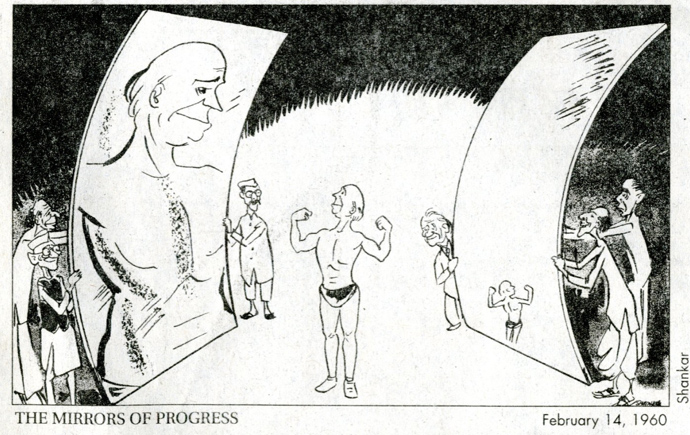
Attacks on irreverent cartoonists began in the early 2010s, just before Modi took over as head of the central government. In 2012, cartoonist Aseem Trivedi was arrested in Mumbai, then ruled by an ultra-nationalist coalition that included the BJP. Because he had depicted the corruption-ridden Chamber of Deputies as a toilet bowl, Aseem was charged with 'sedition' (literally "illegal use of force to overthrow a government"), an offence dating back to the colonial era,and an ordinance that Hindu nationalists were finding useful.
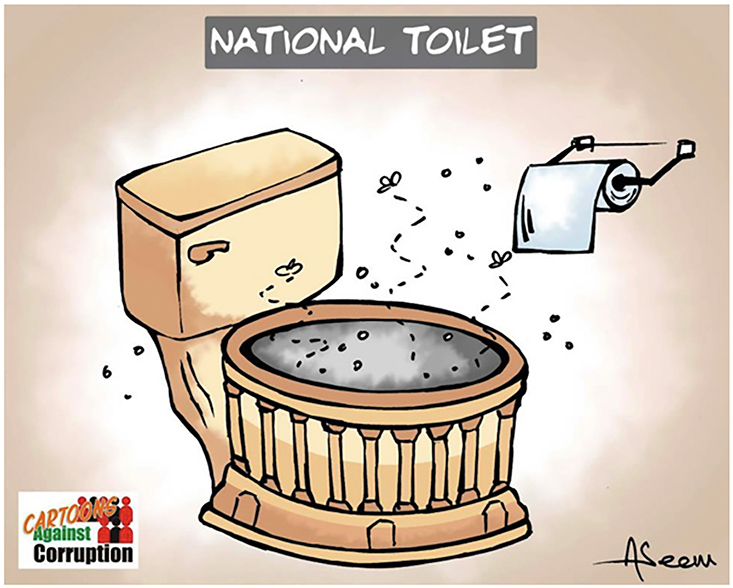
cartoonsagainstcorruption.blogspot.com
Aseem was facing three years in jail. His arrest made waves, the opposition and independent media came to his defense, he won an international prize for courage in cartooning, but had to wait several years before being completely exonerated by the High Court. Newspapers closed their doors to him, and several web platforms rejected his cartoons. To continue his work, he eventually launched an independent blog, 'Cartoons Against Corruption'.
In 2017, the local Tamil Nadu police arrested cartoonist Bala, accused of defaming the Chief Minister and two civil servants in a cartoon showing them naked, unable to rescue a debt-ridden father who had set himself on fire in front of the tax department.
Released after a mobilization of strong opposition, Bala was finally acquitted by the court, but banished from the offices of ever-increasingly skittish editors. The Indian press, once liberal, had taken a turn for the worse since Modi got closer to the big families that control most of the media. Of late a financier linked to the Prime Minister bought the NDTV channel. Most mainstream media now follow the BJP line.
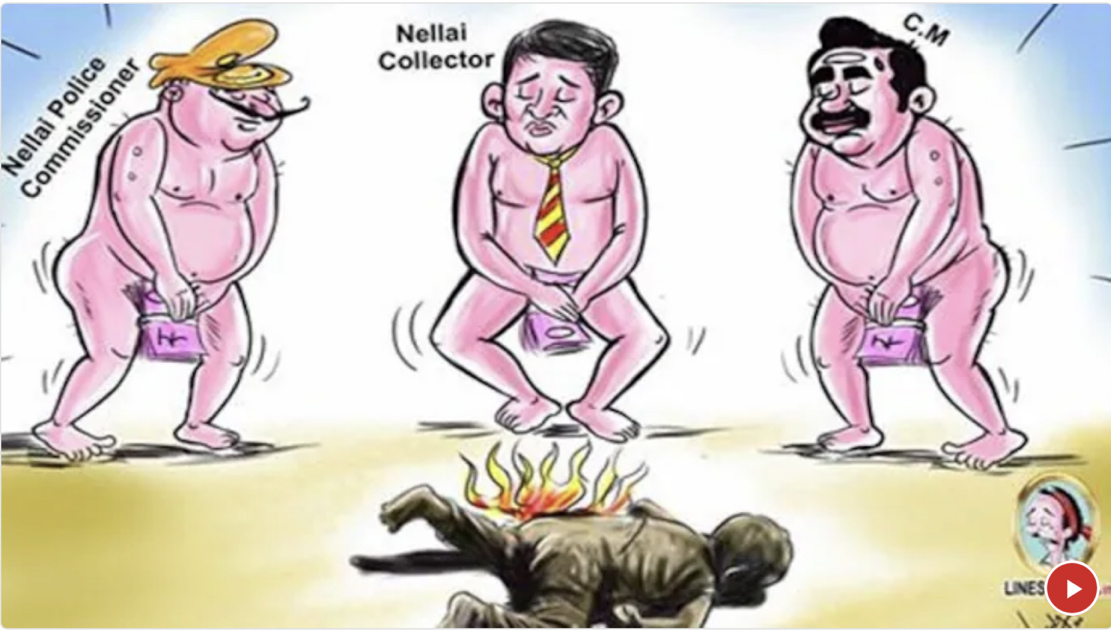
It has become extremely difficult to criticize the Prime Minister in the national press. A popular cartoonist, Manjul received clear verbal instructions from several newspapers not to depict the PM. The editor-in-chief of a major daily enjoined him to align his cartoons with government policy. After Manjul's refusal, the newspaper stopped publishing him. "Much of the press has succumbed to the pressure, resulting in an atmosphere of self-censorship", explains the cartoonist."Cartoonists and writers operate in a constant state of fear.”
Editorial cartoonists started regrouping on digital platforms and social networks, seemingly offering more expressive freedom.
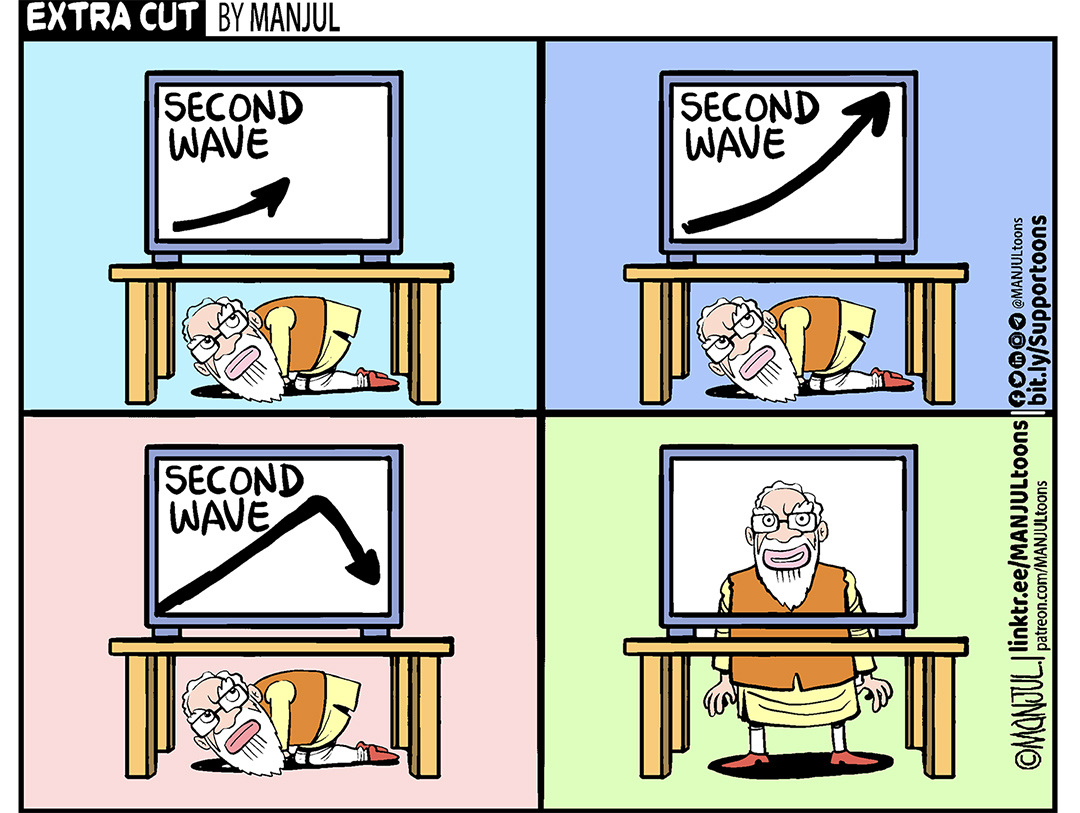
The fragile haven of social networks
In this new playground, cartoonists have let loose and allowed themselves to target Modi. A new generation, including a few women, has emerged on the web. Among them feminist cartoonist Rachita Taneja, aka Sanitary Panels, with her minimalist style takes direct aim at the powers that be. A drawing in which she criticized the Supreme Court, suspected of having favored a defendant whose father was a BJP cacique, earned her a charge of "contempt of court". Criminal proceedings against her are still underway.
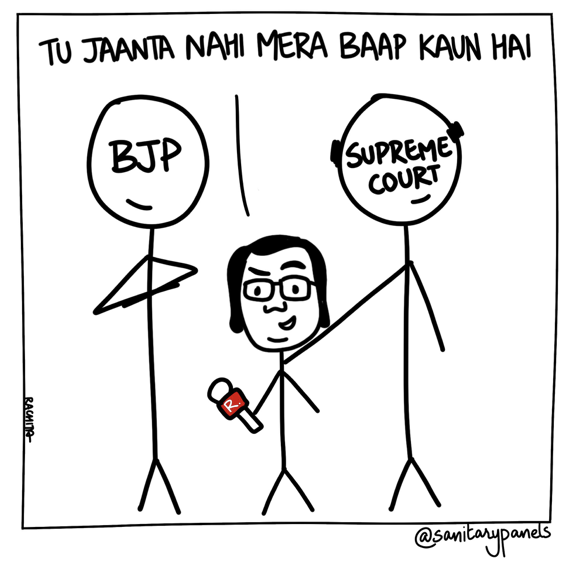
surrounded by a figure representing the ruling party and the
Supreme Court, saying "You don't know who my father is".
But social media does not offer “a definitive solution", observes Manjul, who had to block 27,000 trolls on Twitter, a tenth of his audience. In early June 2021, Twitter warned him that the Indian government was requesting the closure of his account due to "violations of Indian laws". Four days later, Network 18 abruptly interrupted a six-year collaboration with him. And two weeks later, the very active online cartoonist Bala received the same warning from Twitter. The Indian government understands that it can enlist the little blue bird in the service of repression.
And apart from the official channels, there's another weapon at its disposal: the legions of Internet users. On the news site The Quint, Bala explained that the Prime Minister's enablers rely on WhatsApp or Telegram groups made up of many thousands of followers, activated swiftly and en masse to denounce this or that user designated as a target.
“Now Twitter and Facebook are automated”, said Bala. "They don’t know if the account is of a cartoonist or anybody else. They just see that multiple people have reported it and they block it. I have been blocked by Facebook for four months. If I post anything, my account will be deactivated”.
"It's like drawing cartoons in a war zone"
For fear of upsetting the government and losing the huge Indian market, Twitter, Facebook/Meta and Youtube are bowing to pressure, and the noose is tightening. "It is an atmosphere akin to drawing cartoons in a war zone", Manjul sums up. To the independent website Refiff.com, cartoonist Satish Acharya explained: "My only response to every tactic used by any government to intimidate me or restrict my art, is through more cartoons. As an editorial cartoonist, the Constitution of India gives me enough right to express my opinion through cartoons.”
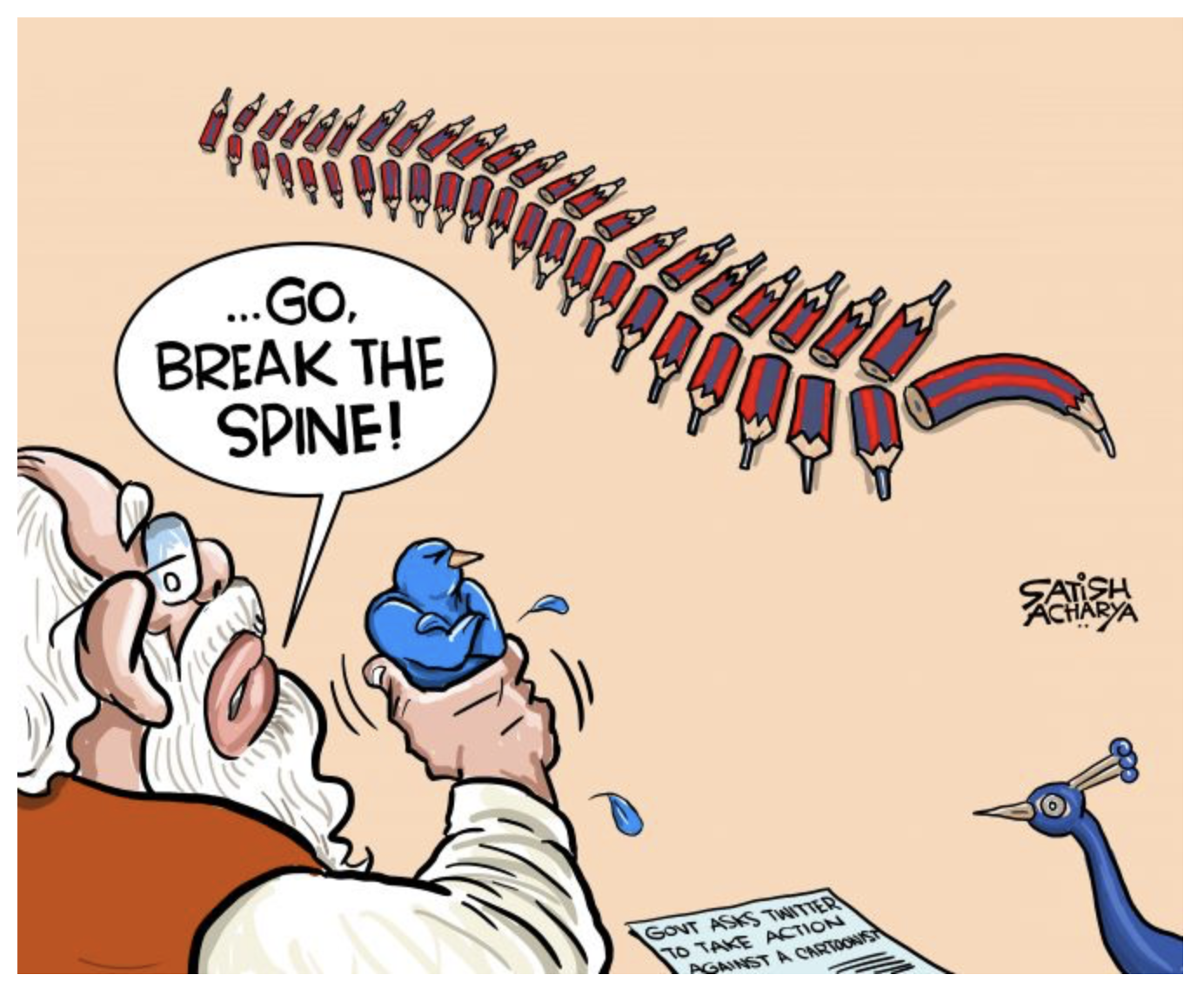
The noose tightens
Except that the bulwark provided by a written Constitution is not enough to stop the ultranationalists, who have set the right to freedom of expression in their sights, resorting to censorship under the pretext of anti-blasphemy measures, or in the interests of resolving inter-community conflicts (disharmony which they also exacerbate). "Art that offends people's sensibilities must be banned", declared a senior BJP leader. The height of hypocrisy from a party that openly discriminates against followers of Islam and ethnic or religious minorities.
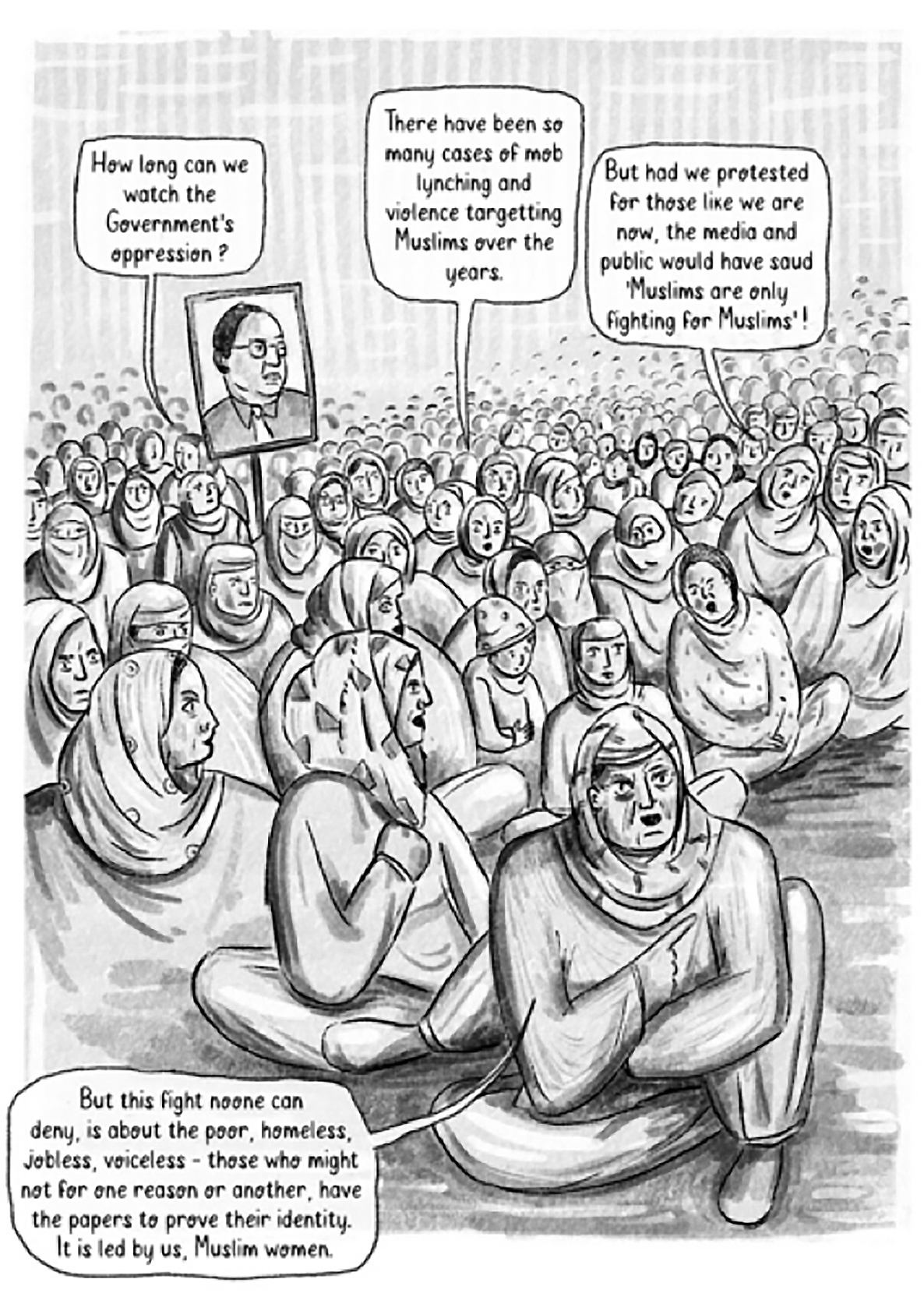
recollection”, bxy Ita Mehrotra
Another shocking method used by the ruling party's henchmen is to label any protest work as "anti-national". Ita Mehrotra knows all about this. She recently published a comic book recounting a protest movement by Muslim women, mobilized against a new citizenship law hostile to Muslims. "Members of the BJP's student wing organized a protest against the book, calling it 'anti-national literature'", she recounts over the phone. “I've also been invited to speak around the book and exhibit artwork from it, only to find that institutions suddenly withdraw their invitation, saying the material is too political. Freedom of expression has never been so curtailed since the State of Emergency in 1975”.
Repression affects everyone. Comedians have been prosecuted despite the popularity of stand-up comedy, Bollywood is under constant surveillance, TV series are censored and the independent media is increasingly muzzled. Even the BBC can't escape reprisals. Video sharing of a recent documentary on Narendra Modi's sulphureous past was banned in India, and a squad of tax inspectors raided the British broadcaster's offices in Mumbai and New Delhi on suspicion of "foreign exchange violations". Before the BBC, other independent media had also been raided by the tax authorities.
The real India-China competition
Narendra Modi is ready to go even further. His government is currently preparing a new law that will enable it to closely control the circulation of information on the web and social media. A freedom-destroying law inspired by... Chinese legislation!
"Modi is copying his great rival Xi Jinping"
When it comes to the repression of dissent, Modi doesn’t shy away from copying his great rival Xi Jinping. The Indian Prime Minister, who was received with all honors by US President Joe Biden in June 2023, may proclaim that his country is "the world's greatest democracy”, but the Indian Union seems to be firmly diverted onto the tracks that lead to autocracy. According to RSF's latest "World Press Freedom Index", India fell from 150th to 162nd place in 2023, and is on course to catch up with China, which ranks 168th out of 170 places!
A suggestion: how about I update my (now famous) cartoon, with Modi crouched at the controls on the "Censorship Express", about to supplant Xi Jinping and his train of state-sponsored repression? More realistic?
Patrick Chappatte
Research & documentation: Freedom Cartoonists Fondation, Geneva

Also read:
«You are a racist! Analysis of a Twitter storm», by Patrick Chappatte, August 20, 2022
«The end of political cartoons at The New York Times», by Patrick Chappatte, June 10, 2019
Watch the TED conference by Chappatte on the same topic in July 2019


